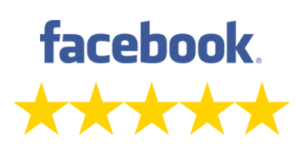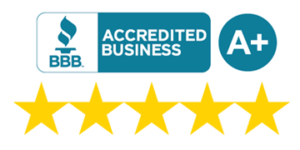
LICENSED MOLD REMOVAL SERVICES
Mold in Your Home or Business?

360 Property Restoration
We Are Here For You 24/7
- Environmental Solutions
- Free Estimates – No Strings Attached
- Immediate Local Response
- Licensed mold remediation in Binghamton and Certified Experts
- Residential and Commercial Services
At 360 Property Restoration, we provide professional mold removal and remediation services delivered by licensed experts.
Mold is a universal reality, and it’s imperative to conduct mold inspections to detect visible growth or airborne concerns. If you come across mold in your residence, don’t hesitate to reach out to us for thorough mold remediation.
In situations where your home faces mold risks due to flood or fire damage, we extend our support with complimentary mold estimates. We can have a team onsite within hours to assist you in drying your property and averting potential mold growth issues promptly.
Our commitment is deeply rooted in customer education, top-tier service, and unwavering compliance with national standards and best practices.
For a no-obligation mold removal or remediation quote, contact one of our certified mold remediation Binghamton, NY specialists in your local area today! Keep in mind, that if you suspect mold growth in your home, it’s crucial to initiate the process by connecting with local mold testing professionals to pinpoint the problem.



Mold Removal Facts
Mold Grows Quickly
Mold is a fast developer, with a straightforward growth formula. All it demands is moisture, temperatures exceeding 40 °F (4 °C), and organic material. Given the right circumstances, mold can emerge within a mere 24 48 hours. It favors spaces that lack sunlight, have restricted airflow, and remain relatively undisturbed, allowing for rapid expansion.
Cleaning Visible Mold is Not Enough
Visible mold is just the beginning. Mold often lurks in hidden spaces like fiberglass insulation, ceiling tiles, ducts, behind drywall, within wall gaps, and concealed by wallpaper. Even experts find it challenging to differentiate between mold, soot, and dirt without proper testing. This means that what you see is only a fraction of the potential issue, and some hidden mold can be incredibly hard to pinpoint.
Mold Cleaning is Hazardous
Engaging with mold can be hazardous. Just a small quantity of 3-5 mold spores is enough to trigger an allergic reaction. Additionally, certain molds carry mycotoxins, which can be carcinogenic or deadly. Any form of vibration or movement can prompt mold to discharge its spores, heightening the potential health risks associated with its presence.
Mold Destroys Your Home
The consequences of mold in your home can be profound. According to Professional Builder Magazine, the presence of mold can significantly devalue your property. For instance, a home initially valued at $250,000 can quickly accumulate $100,000 in mold-related issues, making it a tough sell at any price. Moreover, mold poses a severe risk to the structural integrity of your home, potentially leading to extensive damage.
Bleach & Detergent Will Not Eliminate Mold
While bleach and detergent can effectively tackle mold on nonporous surfaces, they have their limits. Porous materials like ceiling tiles, carpeting, and wallboard often experience extensive mold infiltration, necessitating replacement. Simply removing visible mold won't suffice; without addressing the root causes of moisture and humidity, regrowth is likely to occur.
Mold Removal Requires Professional Equipment and Training
Mold removal professionals employ an array of cutting-edge equipment to pinpoint sources of moisture, thoroughly dry wall cavities, and safely eliminate mold within your residence. They may even analyze mold samples in a laboratory to identify potentially hazardous strains. Specialized cleaning agents are then employed to restore the property to a safe and mold-free condition.
If you Want any kind of service Please Call on
NEED WATER DAMAGE RESTORATION OR WATER CLEAN UP?
Get a free estimate today!
WHY CHOOSE 360 PROPERTY?
- Free Estimates
- 60 Min Response Time
- Industry Certified
- State-Of-The-Art Equipment
- Safe EPA Approved Treatment Solutions
- Direct Insurance Billing
- Licensed & Insured
Mold Spores & Health Issues
People at high risk from mold spore exposure:
- Individuals with Asthma or Allergies
- Individuals Taking Medication
- Pregnant Women
- Children 6-12 Years Old
- Infants
Understanding Mold
Mold Remediation
Microscopic mold spores are a natural presence, existing almost everywhere, both indoors and outdoors. Thus, the complete eradication of all mold from a home or business is a virtually impossible feat, despite the promises made by some restoration companies claiming to achieve “mold removal”.
Mold exists nearly everywhere, both inside and outside.
Mold spores, too tiny to be seen by the naked eye, drift through the air and can enter your living space via windows, doors, AC/heating systems, or even catch a ride indoors on your clothing or a pet.
Mold spores thrive in the presence of moisture, capable of rapidly forming colonies when exposed to water.
Before commencing mold remediation, it’s imperative to address and rectify any sources of water or moisture. Neglecting this step may result in the return of mold growth.
Elevated indoor humidity levels, even slightly higher than usual, can provide the ideal conditions for mold to flourish. It’s advisable to maintain indoor humidity below 45 percent to help prevent mold growth.
Understanding The Mold Remediation Process
While each mold damage situation is distinct and necessitates a tailored approach, the fundamental mold remediation process remains consistent. The outlined steps below offer a glimpse into the “standard” procedure:
Step 1: Emergency Contact: 1-607-669-3085
Initiating the mold cleanup and restoration process commences with your call. Our experienced mold specialist will guide you through a series of questions to assess the required equipment, resources, and personnel for your situation.
Step 2: Inspection and Mold Damage Assessment
Water damage doesn’t discriminate – it can affect a wide range of materials, from walls and wood components to contents, flooring, and insulation. To gauge the extent of the damage accurately, our skilled technicians utilize advanced moisture detection equipment. Additionally, they establish a “drying goal” and work diligently to achieve it swiftly and efficiently. This involves selecting the appropriate tools, equipment, and techniques for the job.
While keeping an eye on the equipment is essential, it’s equally important to monitor the invisible aspect of the process known as “Atmospheric Readings.” This aspect involves assessing the air being dried. To measure these atmospheric conditions, we use RH units called hygrometers. This crucial tool informs us when the affected air reaches the optimal drying conditions, enabling us to expedite the drying of building materials within the shortest possible time.
Step 3: Mold Containment
In our mold remediation process, we employ multiple containment measures to halt the spread of mold. This may involve advanced techniques such as negative air chambers that isolate the affected area using physical barriers and negative air pressure. These measures effectively confine mold spores, preventing their dissemination during the cleanup process. Additionally, all fans and heating or cooling systems are deactivated to avoid further mold spread.
Step 4: Air Filtration
Our mold remediation process incorporates specialized filtration equipment, enabling our experts to capture microscopic mold spores from the air. We deploy potent “air scrubbers” and HEPA vacuums to effectively curb the spread of these mold spores during the remediation process.
Step 5: Removing Mold and Mold-Infested Materials
The approach to mold remediation hinges on the extent of mold growth and the nature of the affected surfaces. Our skilled mold specialists employ antifungal and antimicrobial treatments to eradicate existing mold colonies and deter the formation of new ones. In cases of severe mold growth, it may be imperative to remove and properly dispose of porous materials like drywall and carpeting to effectively remediate the area.
